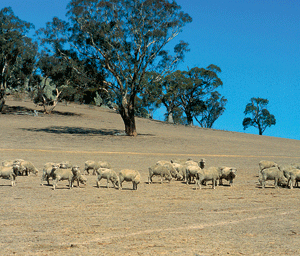
|
Published: 28 November 2011
Window on the climate challenge still ajar, just
Modelling of future climate under current scenarios released last week in Kampala by the Intergovernmental Panel on Climate Change (IPCC) shows that it is ‘virtually certain’ that, on a global scale, hot days will become even hotter and will occur more often. In the same week, a research article in Nature Climate Change indicates that the window of opportunity for limiting average global temperature increase to 2°C above pre-industrial levels is swinging shut.
The IPCC report detailed a linked, increased likelihood of extreme weather events, which will be felt most by the globe’s least developed regions. Whilst the picture given of future climate is not altogether new, Working Groups I and II of the IPPC jointly prepared the Special Report on Managing the Risks of Extreme Events and Disasters (SREX) to advise policy makers on practical measures in disaster risk management and adaptation that can be taken now to prepare and shield vulnerable communities against the predicted future weather impacts.
Rajendra Pachauri, Chair of the IPCC, said the report ‘...underlines the complexity and the diversity of factors that are shaping human vulnerability to extremes – why for some communities and countries these can become disasters whereas for others they can be less severe.’
The research and modelling behind the report showed there is high confidence that both maximum and minimum daily temperatures have increased on a global scale due to the increase of greenhouse gases.
Thomas Stocker the other Co-chair of Working Group I, said ‘For the high emissions scenario, it is likely that the frequency of hot days will increase by a factor of 10 in most regions of the world.’
‘Likewise, heavy precipitation will occur more often, and the wind speed of tropical cyclones will increase while their number will likely remain constant or decrease.
Other regional scenarios, such as concerning extreme drought and tropical cyclones, were given ‘medium confidence’ of occurrence given a lack of data.
‘Nevertheless, there are many options for decreasing risk. Some of these have been implemented, but many have not. The best options can provide benefits across a wide range of possible levels of climate change,’ said Vicente Barros, Co-chair of Working Group II.
Chris Field, the other Co-chair of Working Group II, said ‘We hope this report can be a scientific foundation for sound decisions on infrastructure, urban development, public health, and insurance, as well as for planning – from community organizations to international disaster risk management.’
Meanwhile the research in Nature Climate Change titled ‘Long-term climate implications of twenty-first century options for carbon dioxide emission mitigation’ was undertaken by an international team of scientists, led by the University of Exeter, and included CSIRO’s Dr Mike Raupach.
With detailed modelling the team examined the extent to which carbon emissions should be reduced, how steep this reduction needs to be and how soon we should begin, if we are to keep temperatures to below the 2°C target – considered a safe level threshold.
They found that the target will only be achieved if carbon dioxide emissions begin to fall by at least 3 per cent per year over the next two decades and eventually decrease to zero.
Speaking to ABC Radio’s AM program, Dr Raupach said ‘If we do reduce emissions rapidly then zero emissions will do, but even a small leakage in the long term – like over a hundred years from now – of about 10 per cent of current emissions, is enough to keep temperatures slowly rising.’
Co-author Professor Susan Solomon of the University of Colorado said, however, ‘The good news is that it’s not too late’. ‘...we really need to think in the very long-term as well as the near-term. Even a small amount of remaining emissions would eventually mean exceeding the target so we need to ensure that technologies are available to make our world carbon-free in the long run.’




